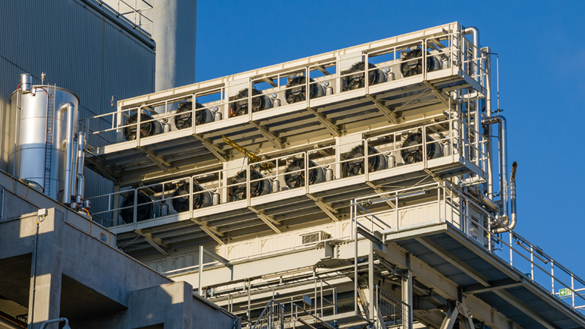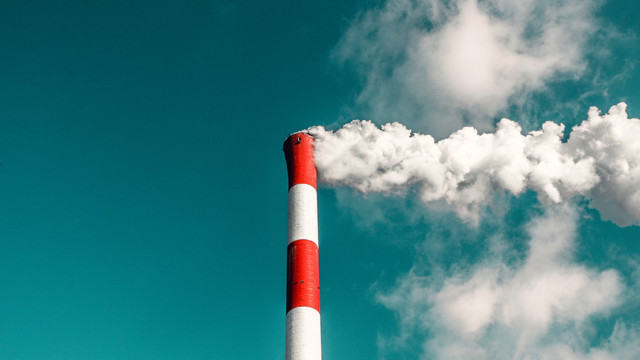
What is SF6? Sulphur hexafluoride explained
Sulphur hexafluoride (SF6) is a gas that’s commonly used in the electricity industry in electrical switchgear.
As a greenhouse gas, it contributes to global warming in a similar way to carbon dioxide (CO2), though it’s much more potent than CO2. Today, wider understanding of the potency of SF6 gas – and the need to reach net zero carbon emissions by 2050 in order to tackle climate change – is causing a rethink of its use.
What is SF6?
SF6 is a synthetic, odourless gas that’s used in the electricity industry to keep networks running safely and reliably as it’s highly stable, non-toxic, non-flammable and electronegative. This stability means that it will not easily form other compounds that will alter its state and effectiveness, and it doesn’t degrade easily in the atmosphere.
SF6 has historically been used in a variety of applications, from metal smelting to filling double-glazing panels. However, the electricity industry is one of the few places where it’s still used today, due to its unrivalled performance and the technical challenges in replacing it in electrical applications.
Why is SF6 harmful to the atmosphere?
SF6 is one of the most potent greenhouse gases we know. Its high atmospheric stability and ability to trap infrared radiation means it’s far more potent at warming the earth’s atmosphere than CO2 over long periods of time.
Greenhouse gases in the atmosphere trap heat from the sun, warming the planet and the oceans. This ‘greenhouse effect’ is essential for maintaining the planet at a suitable temperature for life. However, excessive release of greenhouse gases into the environment over many decades – such as CO2 released from the burning of fossil fuels and other carbon-intensive practices – increases the trapped heat in the atmosphere and results in global warming.
It’s estimated that, over a 100-year period, SF6 is 24,300 times more effective at trapping infrared radiation than CO21, meaning that 1 kg of SF6 has the same global warming impact as 24,300kg of CO2. This multiplier is known as the Global Warming Potential (GWP) of the gas, so SF6 has a GWP of 24,300. Once in the atmosphere it has an atmospheric lifetime of around 3,200 years, which means it can accumulate without degrading for millennia to come.

What is SF6 used for?
Around 80% of the SF6 used globally is in electricity transmission and distribution.2 Medium- and high-voltage electrical equipment (switchgear) contains SF6 to insulate the live electrical parts and to safely switch the flow of electrical current on and off. This switchgear is used throughout the electrical network, including to connect the generation and storage of renewable energy of all types.
Electrical switchgear using SF6 is designed to avoid the release of the gas into the atmosphere, but small quantities are released during the lifecycle of the equipment: manufacture, installation, operation, maintenance and decommissioning. Larger leaks can also occur during its lifecycle, for example due to equipment malfunction.
Why is SF6 used in electrical switchgear?
The use of SF6 has served the electricity supply industry well from the 1970s onwards, due to its excellent electrical insulating properties and even better arc quenching abilities.
Prior to this, vastly complex circuit-breakers were used, which required a large amount of compressed air at high pressure as well as taking up a lot of space. The use of SF6 in transmission switchgear allowed utilities to compact and miniaturise substations, meaning smaller footprints and less obtrusive designs. It has also driven down costs, both in switchgear capital investment and ongoing maintenance.
However, SF6-free switchgear is now becoming commercially available for many transmission applications and this new technology is being developed and adopted by leading utilities, such as National Grid.
How does SF6 contribute to global warming?
Due to its high GWP, SF6 released into the earth’s atmosphere can make a significant contribution to global warming. The global annual emissions of SF6 rose 24% between 2008 and 2018, largely due to the growing use of SF6 switchgear in developing countries.
In 2008 an estimated 7,300 tonnes were emitted globally, which rose to 9,040 tonnes in 2018. To put it in context, 9,000 tonnes of SF6 equates to the greenhouse gas emissions of approximately 44 million passenger vehicles driven for one year, or 103 million tonnes of coal being burned.3
Levels of SF6 released into the earth’s atmosphere are likely to be significantly underestimated, as tracking its release in countries that don’t have reporting requirements is difficult.
How can SF6 production be reduced?
To prevent more harmful SF6 being released into our atmosphere, solutions to replace SF6 with greener alternatives are being developed. These are some of the ways we’re currently reducing our use and release into the atmosphere of SF6:
- Building new substations with SF6-free switchgear where it’s commercially available.
- An ongoing programme of leak repair and mitigation of older SF6-filled equipment to reduce emissions.
Where we do still need to use SF6 (such as for maintenance), we re-use SF6 from decommissioned equipment wherever possible.
The UK’s first SF6-free gas-insulated transmission substation
Our new Bengeworth Road Substation – part of the £1 billion London Power Tunnels 2 project – will include high-voltage SF6-free switchgear, representing a crucial step towards our ambition to reduce emissions of the gas from our network by 50% by 2030.
Using the new solution means that we can avoid the cost of replacing equipment while still reducing the carbon impact of SF6 emissions, and we’ll be deploying this solution more widely in the coming years.
Find out more about our SF6-free substation
Last updated: 4 Feb 2025
The information in this article is intended as a factual explainer and does not necessarily reflect National Grid's strategic direction or current business activities.
See all energy explained articles
1 According to the Intergovernmental Panel on Climate Change’s (IPCC) sixth assessment report.
2 According to Carboncopy, Wikipedia and the US Environmental Protection Agency (EPA).
3 According to Forbes.



